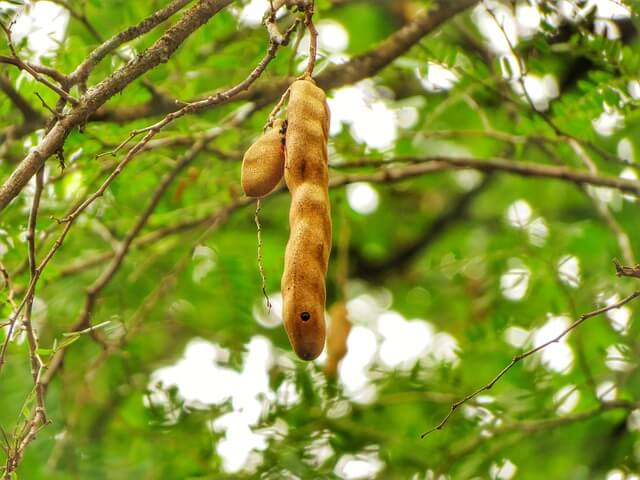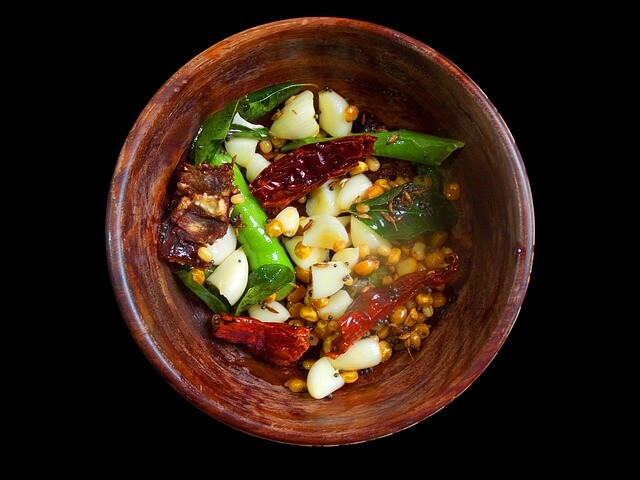Have you ever tasted Middle Eastern and Asian foods and found them unexplainably delicious? Have you ever wondered why the food there is so unique and unlike any other cuisines you ever had? Well, we’d argue it’s largely because of that one ingredient responsible for delivering that out-of-this-world, mouth-watering flavor that no other ingredient can. What is that one secret ingredient? You guessed it: Tamarind.
What is Tamarind?

Tamarind, also known as the Indian date, is a fruit grown on a very tall shade tree grown mostly in Asia, especially in India. Popular in many parts of the world, Tamarind is called Tamarindo in Spanish and can also be found in some parts of Mexico. Tamarinds are very tangy in taste and add a tasty sourness to dishes along with a hint of sweetness. Due to their unique flavor and taste, tamarinds are mostly found in Asian and Indian dishes.
Uses of Tamarinds

Oftentimes recipes require the use of tamarind paste instead of pure tamarinds, which is (as you’d expect) a thick paste made from fresh tamarinds. Other dishes may also use tamarind syrup or sauce, especially classic Indian dishes (e.g. Bhel Puri, Pani Puri). As you may have figured out by now, tamarinds are an indispensable element of numerous Asian dishes, giving them a distinctive punch of flavor. Nowadays, though, tamarinds are not only used in Asian cuisine but also in a number of Thai and Vietnamese dishes. In many Mexican drinks, you will see the need of tamarinds, especially Agua de Tamarindo.
The demand for tamarinds in the UK is also growing day by day. You’ve likely heard of (or used) the popular fermented dark-brown British sauce known as Worcestershire Sauce, which is actually usually made with tamarind concentration alongside anchovies and other ingredients.
However, aside from in Asia and fewer parts of Mexico, you’ll usually find it pretty difficult to find tamarinds in your local stores. You may find tamarind paste in departmental stores, but processed varieties are never a match for the real thing. But not to worry: there are always other options for imitating its flavor. So, without further ado, let’s have a look at some of the most effective yet convenient tamarind substitutes on the market.
Our Top Tamarind Substitutes
1. Lemon or Lime Juice
If you’re looking for something to imitate the flavor of tamarind, then using lemon or lime juice is a great choice. While it may not offer the same intricacy of flavor as the tamarind, they will deliver that delicious combination of sweetness and sourness to your dish. A mixture of lime or lemon juice plus an equivalent amount of brown sugar is enough to replicate the flavor you are looking for.
2. Pomegranate Molasses
This is another close match for that distinctive tamarind taste. Pomegranate molasses is a highly dense, dark syrup made from pomegranate reduction. It includes the sweetness and sourness you’re after along with a slight acidic trace, making it perfect for cooking any Indian or Asian dish you have in mind. Though pomegranate molasses is a little thinner than tamarind paste, it still works wonders in terms of flavor.
3. Mango Chutney
Another substitute for tamarind or tamarind paste you must know is mango chutney. But you must be aware of the quality in this case. Note that lower quality chutneys will be too much on the sweeter side and lack that sour kick you’re after. You should also keep consistency in mind. You may come across many dishes with large pieces of mango in it which you may not be looking forward to. Therefore, mashing the mangoes in a food processor before adding them to your dish is a quick and easy way to ensure a smooth consistency. Also, note that the ratio should be 1:1.
4. Mango Powder (Amchoor)
Alongside mango chutney, mango powder, also known as Amchoor in India, is a great substitute for tamarind. Amchoor is made from dried, young mangoes. While tamarinds are extremely popular in the Southern part of India, the Northern regions typically prefer using mango powder (amchoor) in their recipes for that added tartness. The flavor provided by tamarind and mango powder is very similar. However, the difference is in the texture. As you’d guess from its name, mango powder is dry. However, as with tamarind paste, you can also make mango paste by adding the powder to equal proportions of water to make it an amazing substitute for tamarind paste in your recipe.
5. Any Citrus Marmalade
Another amazing replacement for tamarind or tamarind paste is any sort of citrus marmalade you can find in your nearby grocery store, but try to ensure you get the higher quality versions from your more up-market stores. You will find that the cheaper marmalades use non-vegan sugar and contain fewer fruits. Although it may taste slightly different, marmalade made with citrus fruits makes a great substitute for tamarind paste and is certainly just as thick and delicious.
6. Combination of Dried Fruits
Yes, you heard us right. Dried fruits can also be used as substitutes for tamarind. All you need to do is mix sweet dried fruits with any citrus juice you can find. The sweetness of the fruits combined with the tanginess of the citrus juice will give you that perfect mix of sweet and sour to achieve that classic tamarind taste. Just mix equal amounts of lemon juice, dried apricots, sliced dates, and chopped prunes and mash them up in a food processor. A tablespoon of the resulting paste will work the same wonders as that of any tamarind or tamarind paste.
7. Vinegar
Although not exactly the same flavor as tamarind, vinegar is another great alternative that’ll provide the tangy kick you need for your recipe. It’s also a great option when you do not have anything else in your pantry to use instead of tamarind. It’s best to use a milder vinegar like white wine vinegar, apple cider, or rice wine vinegar rather than anything stronger. Combine equal amounts of vinegar and sugar to achieve an acceptable blend to replace the tamarind in your dish.
8. Kokum
This is yet another fruit that is somewhat similar to tamarind in terms of flavor. This fruit is mostly found in Southern India and isn’t commonly found elsewhere, but you might get lucky. All you need is to immerse the pieces in water and then put them in your dish for cooking. Note that it contains seeds which must be removed.
9. Kachri Powder
Another ingredient that is almost exclusively used in India, and especially in Rajasthan, is kachri powder. It is comparable to a cucumber and has that equivalent sharp sour taste when it is dried and crushed into powders.
10. Other Alternatives
Try mixing 2 tablespoons of water, 3 tablespoons of lemon juice, ½ cup of tomato paste, 3 tablespoons of Worcestershire sauce, 2 tablespoons of brown sugar and you will create one of the best alternatives for tamarind this list has to offer. Note that it is better to use fresh lemon juice or simply switch the lemon juice for lime or apple cider vinegar if you don’t like the flavor of lemon juice.
